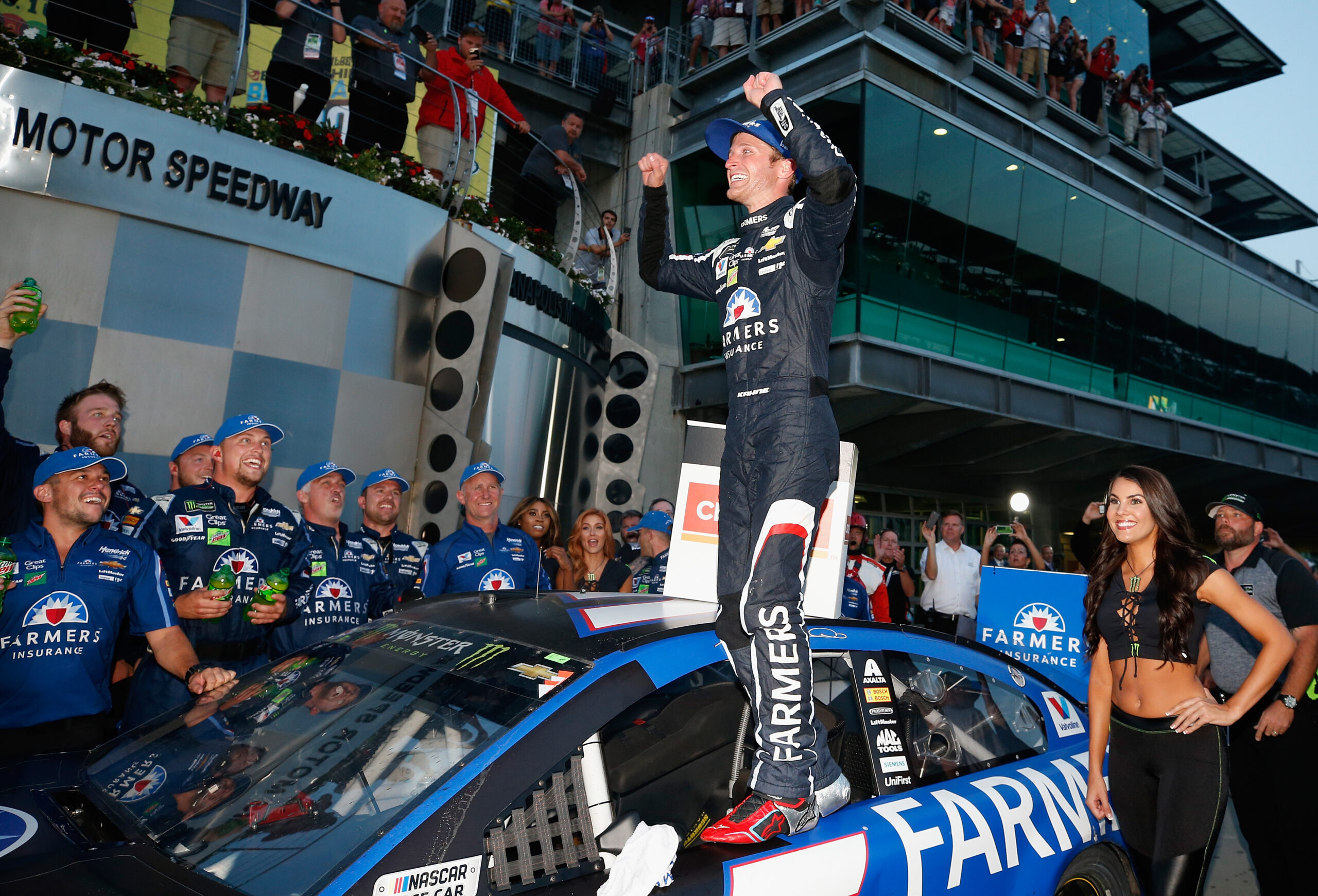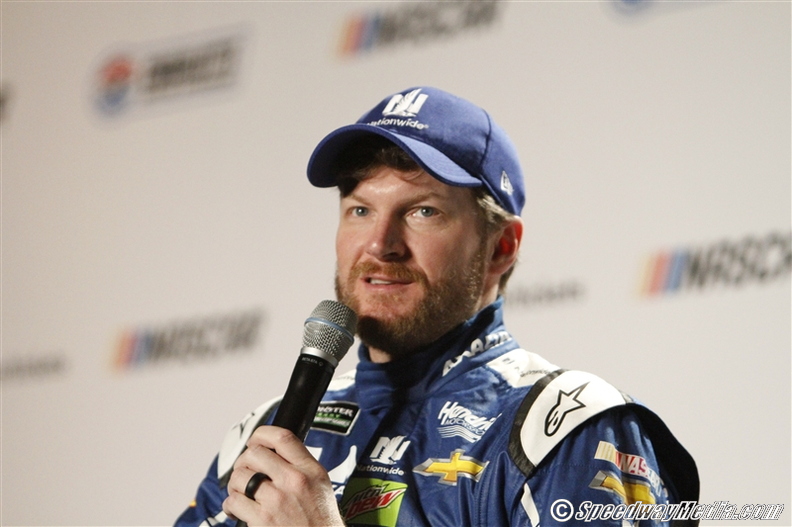All NASCAR had to do was follow their own rule on the overtime line as was written during the Coca-Cola Firecracker 250 NASCAR XFINITY Series race at Daytona International Speedway earlier this month and again during yesterday’s Brickyard 400 at the Indianapolis Motor Speedway, and all of this would’ve been avoided.
But instead, their inconsistent officiating on this matter resulted in two fustercluck finishes in the span of a month!
This has to end NASCAR.
If you missed the end of yesterday’s race, what happened was Denny Hamlin spun out and turned into the wall past the exit of Turn 2, probably a result of his left-rear tire rub from contact on the restart. It triggered a three-car wreck that also collected Paul Menard and Ty Dillon.
Now here’s where the controversy comes into play. When the calamity ensued, Kahne was still a good distance away from the overtime line. As you can see from this screenshot.
Even though this shot is a few seconds after the initial wreck, it’s still obvious that Kahne was a decent distance away from the overtime line when it occurred.
But rather than throw the caution, cleanup and try again, or more like end the race via darkness (which I’ll touch on in a few minutes), NASCAR held the caution until Kahne crossed the line.
Unlike the XFINITY race at Daytona earlier this month, where you could argue they didn’t throw the yellow flag in time (although I find that hard to believe), there was no attempt to mask the blatant disregard for their own overtime rule.
And when I say NASCAR purposefully held the caution, that’s not me looking too deeply at something that isn’t there. That’s practically what NASCAR Executive Vice-President and Chief Racing Development Officer Steve O’Donnell said to Motorsport.com after yesterday’s race, when asked if having a quick caution trigger before the leader reaches the overtime line would make more sense, especially if the goal is to end the race under green.
“No, it wouldn’t, because again, like we’ve said, we want to make the attempt. But we want to do that under the regular regulations of how we call (the race),” O’Donnell said. “So, we look at that as our last attempt. We look at each (overtime) as our last attempt. If it can play out, it can play out.”
He basically just admitted that NASCAR decided against throwing the caution immediately, even though Kahne was a ways away from reaching the line the moment it happened.
There’s a problem with this line of thinking, as Jim Utter of Motorsport.com best puts it.
“If the object is to allow the race to play out to its natural conclusion, then why have the OT rule (or any other similar scheme) in the first place?”
I’ll also expand on his point. If NASCAR wants run overtime under “regular regulations,” why would you hold the yellow at this point when you wouldn’t do that at any other point in the race?
And why did they holster the yellow? Because the sunlight was running out, and they believed they wouldn’t have gotten the track cleaned up in time.
“It would have been (too dark),’’ O’Donnell said. “If we would have red-flagged the race, we would have never got it back in. There was clearly oil on the race track.’’
Disregarding the fact that NASCAR essentially shortened the race because of darkness anyway, why does that matter? The fact that there was waning sunlight shouldn’t factor into this at all. The race leader hadn’t reached the overtime line when the wreck happened! The caution should’ve flown before then.
NASCAR, either run the race to its scheduled conclusion, and no further, or go the ARCA route and do as many restarts attempts as needed to ensure a green flag finish. This overtime line approach of doing restarts is causing more trouble than it’s worth.
That’s my view, for what it’s worth.








